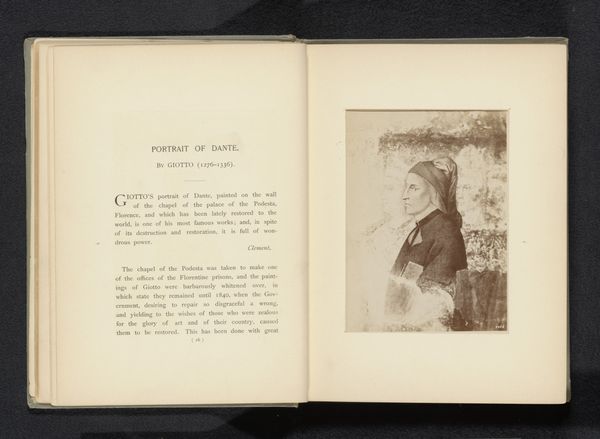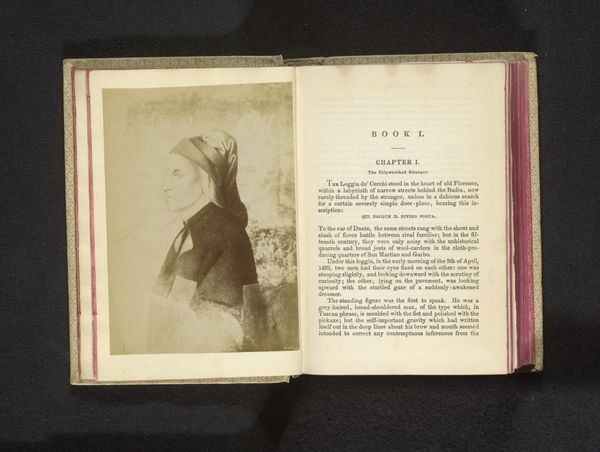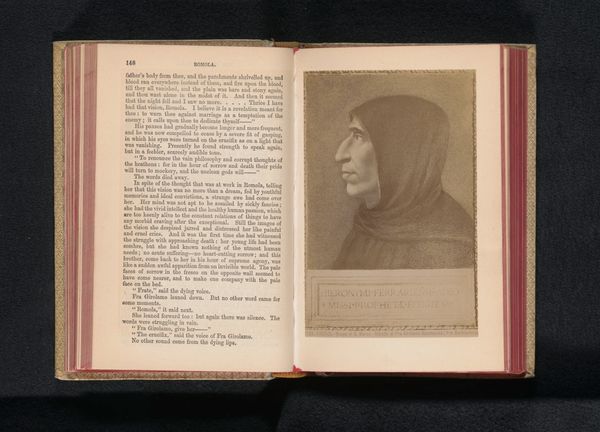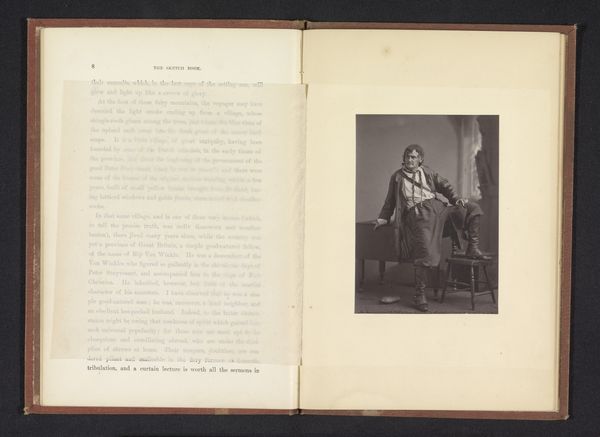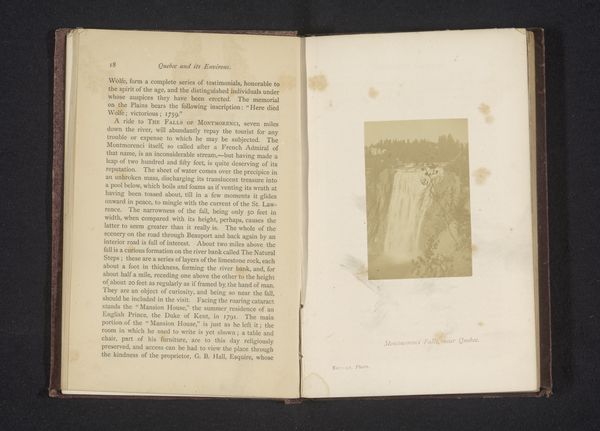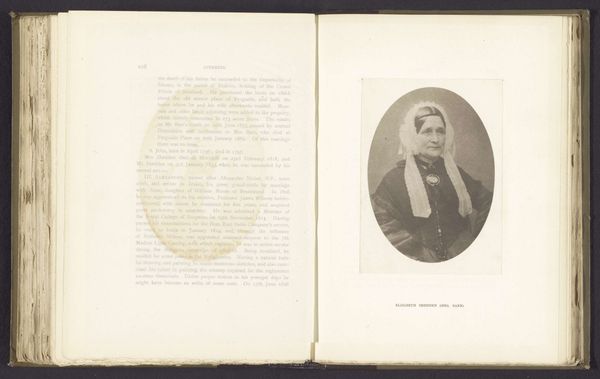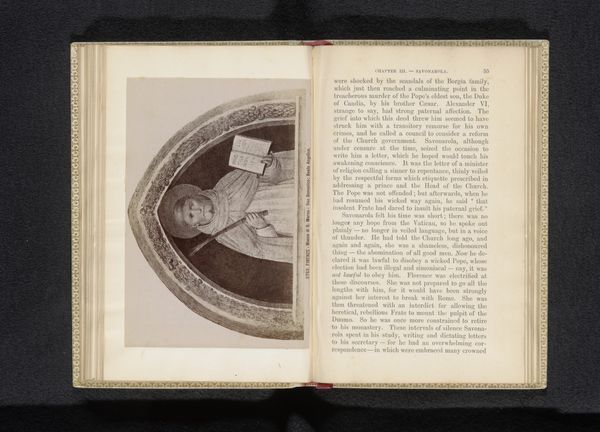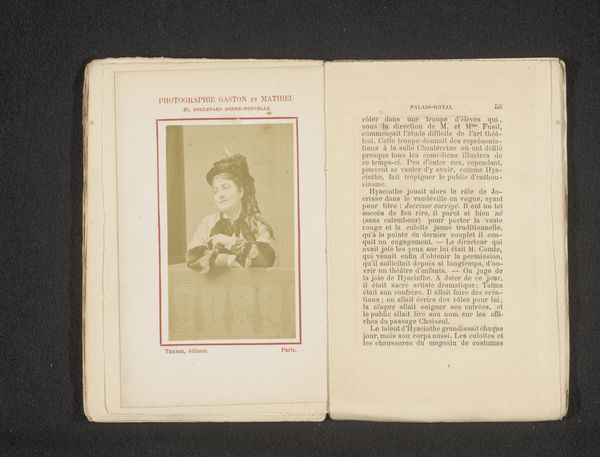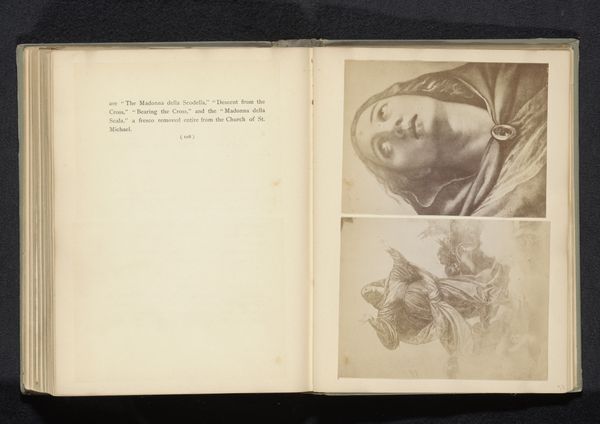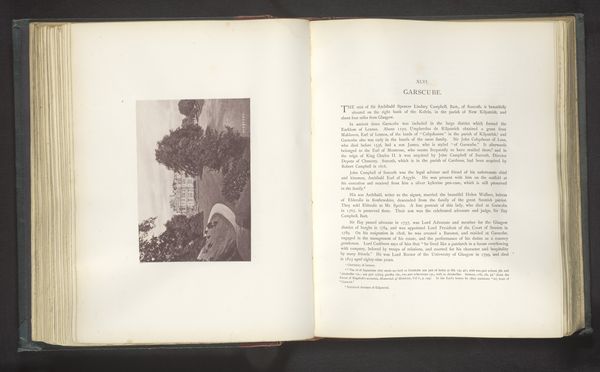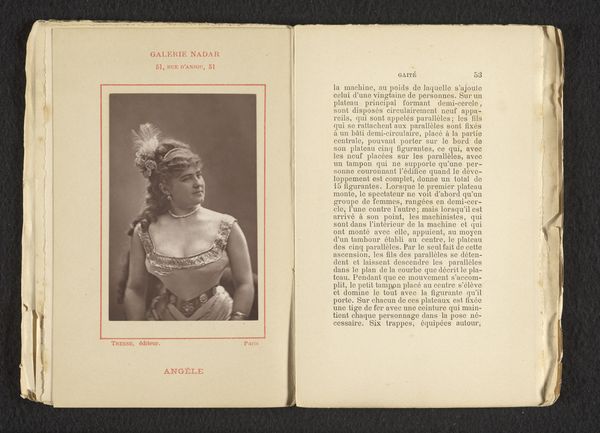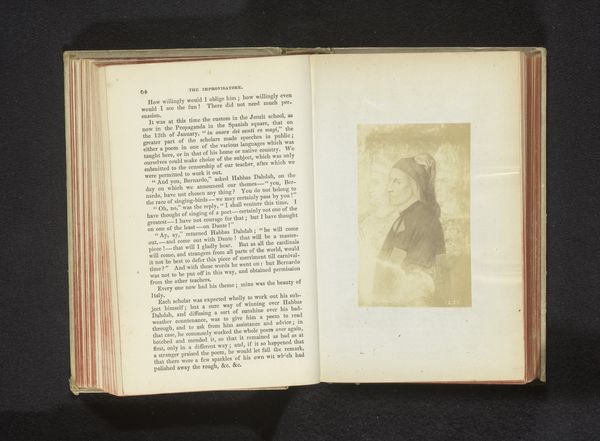
Dimensions: height 120 mm, width 80 mm
Copyright: Rijks Museum: Open Domain
Curator: This print offers a photographic reproduction of a fresco portrait of Dante, placing it in the period of roughly 1870 to 1880. The original fresco… I wonder if it survives. Editor: My initial reaction is of something aged and ethereal, like a fading memory captured imperfectly. The texture is quite coarse; one really gets a sense of the paper and the printing process. Curator: Yes, the printing technique itself certainly emphasizes the materiality. It draws our attention to the layering of ink on paper, the tangible result of reproductive technologies encountering older art forms like frescoes. It highlights how these images circulated and were consumed. Editor: Beyond the process, it also makes me think of Dante's enduring symbolic power. The halo effect around his head and those ghostly figures in the background—it creates an almost saintly aura. Dante as poet-prophet, almost divinely inspired. Curator: It makes you think about artistic labor, too. Somebody physically operated the camera, prepared the printing plates. We have Romantic notions of solitary genius like Dante himself, but consider the skilled craftspeople that actually facilitated access to that image. It grounds these mythical figures in material reality. Editor: True, the mechanical reproduction takes away from the idea of the "original" and calls our attention to the many people involved in producing, disseminating, and consuming the image of Dante as cultural icon. Yet, paradoxically, the image persists as a touchstone for artistic inspiration. What did Dante mean to people in the late 19th century and to us today? Curator: Right, we have this tension. Dante's iconic status seems separate from these individuals actually producing, purchasing and circulating prints. How were those romantic, even nationalist ideals, built upon tangible forms and distributed across vast social landscapes? Editor: So we’re left with this interesting question: Can mass production of images undermine the unique authority of the artist and his work, or does it instead help immortalize him through wider cultural circulation and accessibility? Curator: A provocative question that this work begs us to ask! Thanks for offering that symbolic perspective!
Comments
No comments
Be the first to comment and join the conversation on the ultimate creative platform.
